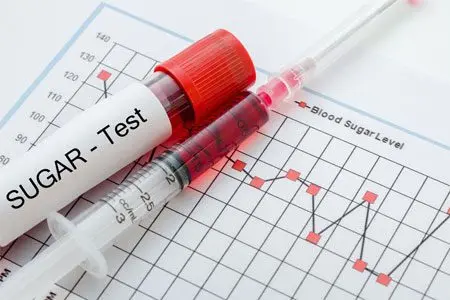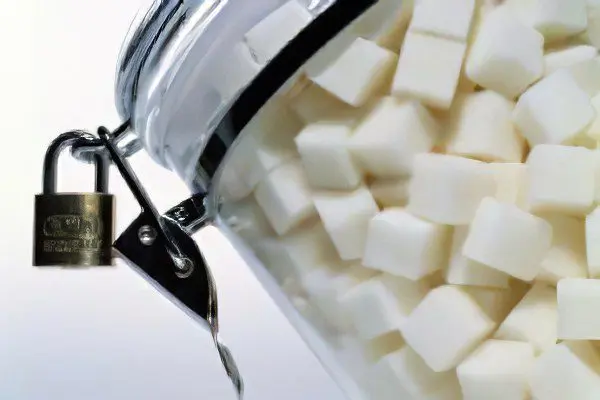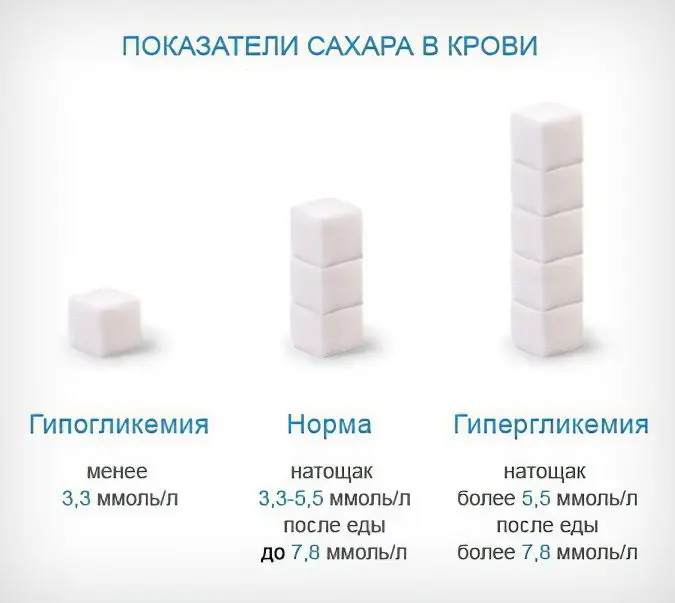Contents

Blood glucose is the sugar that the bloodstream carries to all the cells in the body to supply them with energy. The body regulates blood glucose levels so that they remain moderate: enough to fuel cells, but not enough to overload blood flow.
The internal environment of the blood must remain stable in order to maintain the vital functions of the body. Glucose levels fluctuate throughout the day. After a meal, the levels rise and then fall, after about an hour, and are at their lowest point before another meal.
When there is a violation of glucose metabolism in the body, this manifests itself in an increased content of glucose called hyperglycemia, and there may be a low content – hypoglycemia.
Glucose levels fluctuate throughout the day. After a meal, the levels rise and then fall, after about an hour, and are at their lowest point before another meal.
In this article, we’ll look at high and low glucose levels, as well as how to stay within a healthy blood sugar range.
elevated sugar

Hyperglycemia is an increased level of sugar in the blood plasma. Elevated blood sugar may look normal, while it will be a kind of adaptive reaction of the body, which ensures the supply of energy material to the tissues, when there is an increased consumption of it – this may be increased muscle activity, fear, arousal, severe pain etc. Such rises in blood sugar usually last for a short time, this, as already explained earlier, is associated with the stresses of the body.
Hyperglycemia usually develops when there is not enough insulin in the body or when cells become less sensitive to insulin. Without insulin, glucose cannot enter cells and accumulates in the bloodstream.
Hyperglycemia can also occur in people who do not have diabetes. Your blood sugar levels can skyrocket if you are sick or under a lot of stress. This happens when hormones the body makes to fight disease raise blood sugar levels. Such rises usually last a short time.
If hyperglycemia continues for a long time with a sufficiently high concentration of glucose, at which the rate of release of sugar into the blood exceeds the rate at which the body manages to absorb it, then this, as a rule, is due to diseases of the endocrine system. This can also have detrimental consequences, which will be reflected in the form of damage to the insular apparatus of the pancreas and the excretion of glucose in the urine.

What Diet Helps Lower Blood Sugar?
A mild degree of hyperglycemia practically does not harm the body, and when sugar exceeds the norm, a person begins to suffer from intense thirst, which causes him to drink a lot of fluids, frequent urination occurs, in which sugar is excreted from the body along with urine, as a result of which the mucous membrane of the body becomes dry, as does the skin. A severe form of hyperglycemia can lead to nausea, vomiting, a person becomes drowsy and lethargic, loss of consciousness is possible, this already indicates the onset of a hyperglycemic coma, which can lead to death.
As a rule, hyperglycemia is characteristic only for endocrine diseases, such as diabetes mellitus, increased thyroid function, for diseases of the hypothalamus – the area of uXNUMXbuXNUMXbthe brain that is responsible for all the work of the endocrine glands, in rare cases it may be due to some liver diseases. With prolonged hyperglycemia, a persistent disturbance of metabolic processes begins, which leads to a feeling of severe weakness, the immune system begins to falter, regular purulent inflammatory processes begin in the body, sexual dysfunction occurs and the blood supply to all tissues is disturbed.
Other possible causes of high blood glucose include:
hyperthyroidism, or an overactive thyroid gland;
pancreatitis, or inflammation of your pancreas;
pancreas cancer;
prediabetes, a high-risk condition for developing type 2 diabetes;
stress to the body from illness, injury or surgery;
medicines such as steroids.
Rarely, hyperglycemia can be a sign of a hormonal disorder called acromegaly or Cushing’s syndrome, which occurs when the body produces too much cortisol.
Symptoms of High Sugar
Typically, a person does not experience overt symptoms until their blood sugar levels are significantly above normal.
Early symptoms:
Strong thirst;
Frequent urge to urinate;
The skin is dry, itchy;
Fatigue, drowsiness;
More serious signs and symptoms:
Vomiting;
Nausea;
Wounds, scratches do not heal well;
dry mouth;
The smell of acetone on the breath;
Dyspnea;
Abdominal pain.
The person may also experience:
Blurred vision;
Headache;
weight loss;
Weakness;
Unstable emotional state.
Persistently elevated blood sugar can also lead to insulin resistance, which reduces the amount of glucose your cells take up. Eventually, the condition can progress to type 2 diabetes.
Some serious complications that can develop from persistent hyperglycemia include:
Damage to blood vessels, which increases the risk of heart disease and stroke
nerve damage;
kidney damage or failure;
Damage to blood vessels in the retina, potentially leading to vision loss or blindness
Cataract, or clouding of the lens in the eye
Foot problems that can lead to serious infections
Problems with bones and joints;
Skin problems, including infections and non-healing wounds;
Infections of the teeth and gums.
Using neural imaging, the researchers showed that people with diabetes and cognitive dysfunction also have reduced blood flow to the brain and a number of other abnormalities that affect thought processes.
Index | prediabetes | Type 2 diabetes mellitus |
Fasting blood glucose, mmol/l | 5,5-7,8 | above 7,8 |
Sugar 1 and 2 hours after eating, mmol/l | 7,8-11,0 | above 11,0 |
Glycated hemoglobin,% | 5,7-6,4 | above 6,4 |
Risk Factors

What foods help lower blood sugar levels?
Hyperglycemia can also occur in people who do not have diabetes.
You are at risk if:
Lead a sedentary lifestyle;
Have a chronic or severe illness;
Use steroids;
Recently had surgery.
If you have diabetes, your blood sugar levels can skyrocket if you:
Don’t follow your diabetes meal plan;
Do not use insulin correctly;
You are taking medication incorrectly.
Even an illness like the flu can lead to stress, which causes a spike in blood sugar.
Medical identification bracelet
A person with hyperglycemia should consider wearing a necklace or bracelet that provides information about their health condition. For example, whether the patient has diabetes, allergies, or whether insulin needs to be taken.
A medical identification bracelet can save a life in situations where a person is unable to speak independently, such as after a traffic accident or in the event of severe DKA (diabetic ketoacidosis).
low sugar
Hypoglycemia is a low level of sugar in the blood plasma. It should be noted that hypoglycemia is much less common in healthy people than hyperglycemia. This happens for various reasons, for example, with malnutrition, when there is an overstrain of the insulin apparatus of the pancreas, in simple terms, when a person eats too much sweet food, hypoglycemia develops. Since the pancreas begins to work at its maximum capacity, it begins to secrete more insulin, while glucose begins to be completely absorbed by the tissues, which leads to hypoglycemia.

How to raise blood sugar levels?
Causes of hypoglycemia:
Diabetes;
Some medicines, such as quinine to treat malaria
Too much insulin taken;
Drinking alcohol without food, as the liver may not release glycogen;
Some diseases, in particular, severe hepatitis and kidney disease;
Anorexia.
Permanent hypoglycemia can also begin due to severe liver disease, in which digestion processes are disturbed and glycogen is released into the blood, as well as diseases of the kidneys, adrenal glands and hypothalamus.
Some tumors can severely lower blood sugar levels because they produce chemicals like insulin. The tumor can also consume so much glucose that it is not enough for the rest of the body.
People who undergo gastric bypass surgery may also experience hypoglycemia, as they take in less food than they did before the surgery.
Nesidioblastosis, a rare condition associated with an increase in beta cells, often leads to an overproduction of insulin. Beta cells produce insulin in the pancreas.[2]
Symptoms of low blood sugar
Symptoms of hypoglycemia may come on suddenly.
They include:
Blurred vision;
fast heartbeat;
sudden mood changes;
sudden nervousness;
unexplained fatigue;
Pale skin;
Headache;
Famine;
Dizziness;
excessive sweating;
difficulty sleeping;
skin tingling;
trouble thinking clearly or concentrating;
Loss of consciousness, convulsions, coma.
Severe sweating, trembling in the arms, legs, the whole body, increased heart rate, the appearance of fear of death, a constant and strong feeling of hunger, after which there may be a loss of consciousness. This condition is called hypoglycemic coma. A person suffering from or prone to this disease should always have sweets with him, which must be taken at the first sign of hypoglycemia.
Another possible cause of low blood sugar is drinking too much alcohol, especially for long periods of time. This can affect the liver’s ability to store glucose and then release it into the blood when you need it.
However, contrary to popular belief, low blood sugar is not exclusive to diabetes, although it is rare. This can happen if your body produces more insulin than it should.
Sugar in the blood

In a healthy person who does not suffer from diabetes, the normal blood sugar content is 3,3-5,5 mmol/l on an empty stomach. If the cells of the body fail to absorb the sugar that enters the bloodstream during the digestion of food, the level of sugar in the blood slowly but surely begins to rise. As already known, it is glucose that is the main source of energy.
In a person with insulin-dependent type XNUMX diabetes, the pancreas produces little or no insulin. In the second type of insulin-dependent diabetes, the pancreas secretes enough insulin, but it is unable to work as it should. [3]
To keep sugar normal, you need to combine several methods at once. This, of course, is a healthy diet, as well as regular monitoring of sugar levels. The healthy diet that is prescribed for diabetes is similar to the diet that is prescribed for any healthy person, just to maintain health.
In a sick person with diabetes, the sugar rate, of course, can have a fairly wide range than the sugar content in a healthy person. Ideally, you should strive only for a result of 3,3-5,5 mmol / l. It is almost impossible to achieve such a result in practice, for this reason, if a sick person’s glucose level ranges from 4 to 10, and only occasionally goes beyond these limits, the patient can be satisfied with this result.
With a blood glucose level between 4 and 10, a person with diabetes will not have serious complications for more than 10 years. In order to always maintain this level of sugar in the blood, a person with diabetes must definitely purchase a glucometer.
How to determine the exact level of sugar in the blood?
Before testing, tell your doctor about the drugs you are taking, including prescription, over-the-counter, and herbal supplements. Some medicines can affect blood glucose levels. Your doctor may ask you to stop taking a certain medication or temporarily change your dosage before a test.
Medications that can affect blood glucose levels:
corticosteroids;
potassium-sparing diuretics;
Birth control pills;
hormone therapy;
Aspirin (Bufferin);
Lithium;
tricyclic antidepressants;
Monoamine oxidase inhibitor (MAOI);
Phenytoin;
epinephrine (adrenaline);
Sulfonylureas.
You should also tell your doctor if you have had an injury, heart attack, or surgery in the recent past.
Fasting Plasma Glucose Test (FPG)
A fasting plasma glucose (FPG) test is a blood test that is performed after you have been fasting all night or 8 hours before the test. Do not eat or drink anything other than water.
This method has a number of disadvantages:
It shows the glucose level only at that particular moment. You can go to donate blood every week and the sugar level will always be different!
You can wake up with high sugar levels, but if the clinic is far away, and you decide to take a walk in the fresh air for half an hour, then most likely, when you get to the clinic, your sugar will already be normal! Because walking in the fresh air is good for lowering sugar levels. Or you can drink water in the morning, which will dilute the blood and the sugar will drop again.
You may have had a high blood sugar level for a long time, but if you accidentally lower it (for example, spend the weekend in the country as an employee), then your sugar may return to normal and this type of analysis will show you that everything is in order , but in fact it is not.
Random Plasma Glucose Test (RPG)
A random blood glucose test (RPG – Random Plasma Glucose) is a blood test that can be done at any time of the day. It measures the level of sugar in the blood at a given time.
An RPG result that is greater than 11,02 mmol/L is indicative of diabetes, especially if you have symptoms such as excessive thirst, hunger, or urination.
Oral glucose tolerance test (OGTT)
The Oral Glucose Tolerance Test (OGTT) takes a little longer than the previous two. In this test, blood is drawn after an overnight fast and then again two hours after you drink a sugary drink.
After the sweet, the sugar level will rise. But for the norm, within two hours, it should fall below 7,71 mmol / l.
If you have blood sugar:
Between 7,8 and 11 mmol / l – prediabetes is diagnosed;
If 11 mmol / l and above, type 2 diabetes is diagnosed.
A1C test (glycated hemoglobin)
The A1C test is a blood test that measures the percentage of sugar that is attached to hemoglobin, a protein in red blood cells. The higher the A1C, the higher your average blood sugar over the past two or three months.
The A1C test is also known by these names:
Hemoglobin A1c test;
HbA1c test;
Glycated hemoglobin test.
The level of glycated hemoglobin does not depend on the time of day, physical activity, food intake, prescribed medications, or the emotional state of the patient.
An analysis of glycated hemoglobin shows the number of candied red blood cells in the blood and is displayed as a percentage. Below is a comparison table:
Glycated hemoglobin (HBA1C) | Mean blood glucose (mmol/l) |
| 4% | 2,6 |
| 5% | 4,5 |
| 6% | 6,7 |
| 7% | 8,3 |
| 8% | 10,0 |
| 9% | 11,6 |
| 10% | 13,3 |
| 11% | 15,0 |
| 12% | 16,7 |
Since erythrocytes live up to 120 days, it is enough to do this type of analysis once every 1 months.
Blood glucose meter
You can also measure your blood sugar at home with a glucometer. The accuracy of readings depends on the type of glucometer.
The procedure involves pricking a finger and putting blood on a test – a glucometer strip. The results will be shown on the screen in 10-20 seconds.
Continuous Glucose Monitoring (CGM)
CGM (Conscious glucose monitoring) systems have appeared relatively recently. A glucose sensor is inserted under the skin and reads sugar from body tissue continuously. It warns if the blood sugar level is too low or too high.
The term of use of the sensor lasts from several days to a week. Then it needs to be replaced. Also, in order to calibrate the CGM, you must use a glucometer.
However, the system has a number of disadvantages:
The accuracy of the indication is lower compared to blood;
CGM devices are not as reliable for acute problems such as low blood sugar detection;
The data shown by CGM lag behind reality by an average of 10-15 minutes.
7 ways to prevent blood sugar spikes
Consult with a nutritionist to develop a meal plan. Meal planning will help you avoid unexpected spikes in blood sugar.
Reduce excess weight. Losing weight will help your body use insulin better.
Learn to count carbohydrates. Carbohydrate counting will help you keep track of how many carbohydrates you are consuming. Setting a maximum amount for each meal helps stabilize blood sugar levels.
Learn about the glycemic index. Research shows that not all carbohydrates are equal. The glycemic index (GI) measures how various carbohydrates can affect blood sugar levels. Foods with a high GI rating can affect blood sugar levels more than lower GI ratings.
Healthy Recipes. Buy a cookbook for diabetics.
Portion control practice. A kitchen scale will help you measure portions better.
[Video] What happens if you give up sugar for 2 weeks?









